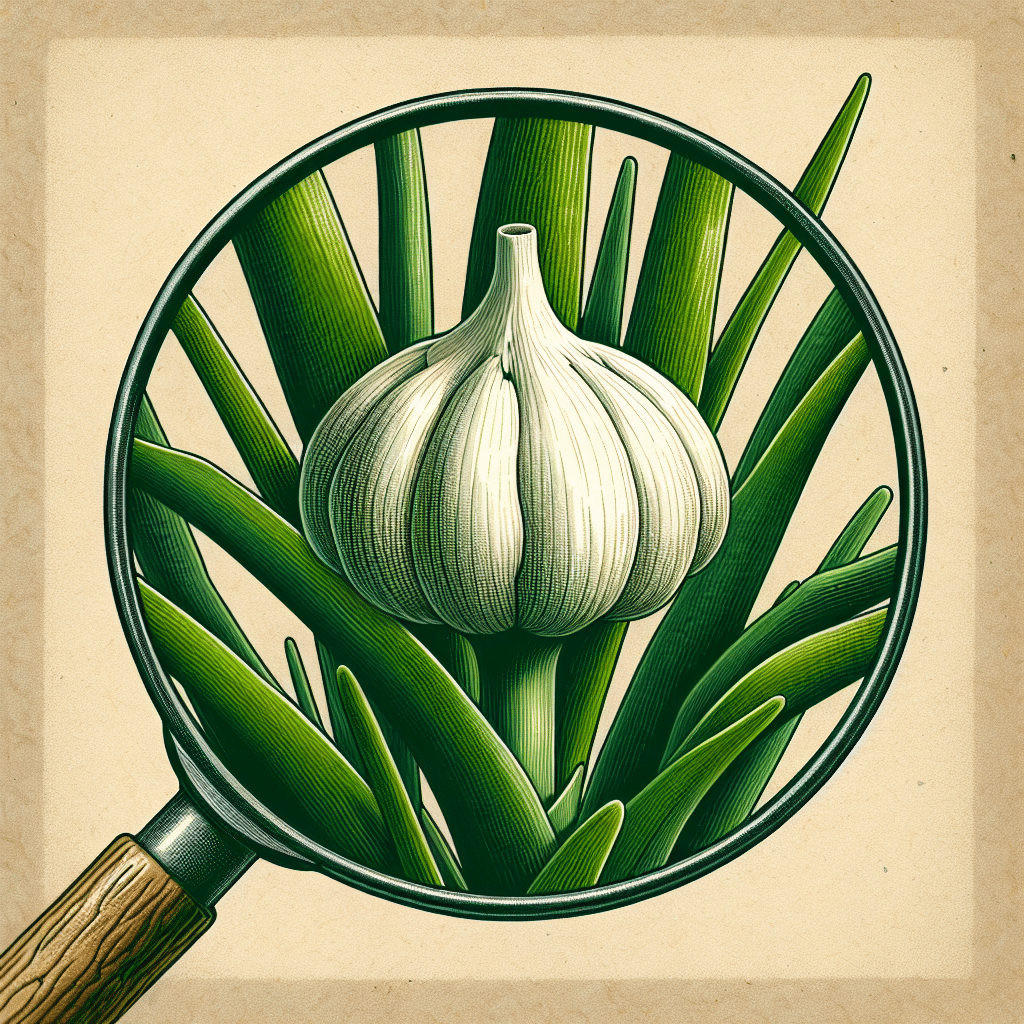Introduction
The bulb that forms on the leaves of garlic, often referred to as a bulbils, is a fascinating aspect of garlic cultivation. Bulbils are small, typically round structures found in the flower stalk of certain types of garlic, particularly *Allium sativum*. These bulbils serve as a means of vegetative reproduction. Unlike the traditional garlic cloves we consume, bulbils can be planted to grow new garlic plants. In essence, they act as a form of asexually produced seeds, allowing gardeners and farmers to propagate garlic without relying solely on the larger bulbs. This process not only provides an alternative method for garlic propagation but also plays a role in ensuring genetic diversity within garlic species.
What Are Bulbils?
Bulbils are aerial bulbs that develop in the flowering stalk of garlic—a remarkable feature that allows this plant to reproduce. They appear when the garlic plant bolts, which means it produces a flower stem. As the plant matures, these bulbils form at the top of the stalk, typically arranging themselves in clusters. While they are much smaller than the typical garlic cloves, bulbils can adapt to various environmental conditions and offer a unique solution for propagation.
The Lifecycle of Garlic Bulbils
1. Formation and Growth
During the growing season, especially in late spring to early summer, garlic plants enter a reproductive phase. The formation of bulbils occurs shortly before flowering. Each bulbil can be thought of as a mini bulb; they can grow into a full garlic plant if conditions are suitable. Ideally, bulbils should be harvested when they are mature but before they fall to the ground, as they can overwinter and grow if planted.
2. Planting Bulbils
To cultivate new garlic from bulbils, gardeners can plant them directly in the soil in the fall. Planting at this time allows the bulbils to experience winter dormancy, which is crucial for a successful growth cycle. When spring arrives, the bulbils begin to sprout, eventually developing into new garlic plants. In about 18 to 24 months, these plants can produce their own cloves ready for harvest.
3. Advantages of Using Bulbils
There are several benefits to using bulbils as a propagation method:
- Diversity: Using bulbils can help introduce genetic diversity into your garlic crop, which may lead to healthier plants.
- Cost-Effective: Instead of purchasing bulbs each year, gardeners can rely on bulbils for self-propagation.
- Robustness: Garlic grown from bulbils often exhibits resilience against pests and diseases as they adapt over generations.
Care and Maintenance of Garlic with Bulbils
To successfully grow garlic from bulbils, specific care must be taken:
1. Soil Preparation
Garlic prefers well-draining, fertile soil. Prior to planting, enrich the soil with organic compost and ensure proper drainage to prevent rot.
2. Planting Depth
When planting bulbils, they should typically be placed about 1-2 inches deep, spaced 4-6 inches apart to allow for adequate growth.
3. Watering
Garlic requires consistent moisture, particularly during its growing phase. Aim for deep watering sessions once a week, especially in dry conditions.
4. Pest Management
While garlic is relatively pest resistant, it’s important to monitor for common issues like aphids or fungal diseases. Ensuring good airflow and crop rotation can mitigate these challenges.
Common Misconceptions about Bulbils
1. Bulbils are Just Small Cloves
While bulbils and cloves may appear similar, they serve different purposes. Cloves are the traditional propagation method and lead to a new bulb, while bulbils grow into separate plants over a longer timeframe.
2. Bulbils Cannot Sustain Over Time
Contrary to popular belief, with proper care, bulbils can sustain and thrive. They have adapted over time to grow in varying conditions, making them a reliable propagation method.
FAQ
What happens if I let the bulbils drop to the ground?
If left to drop, bulbils can germinate in the soil, leading to unintended growth. This can result in an unplanned garlic patch in your garden.
Can I eat bulbils?
While bulbils can be consumed, they are not commonly used in cooking like garlic cloves. If you choose to eat them, ensure they are cooked as they may be quite potent raw.
Will bulbils produce the same type of garlic as the parent plant?
Most of the time, bulbils will produce garlic similar to the parent plant; however, genetic variation may occur, providing some diversity in flavor and characteristics.
Conclusion
Understanding the role of bulbils in garlic cultivation provides valuable knowledge for gardeners and enthusiasts. Whether for home gardens or larger farming operations, utilizing bulbils offers an innovative, sustainable approach to garlic propagation. With the right techniques, you can enjoy a thriving garlic crop grown directly from these small but powerful structures.


